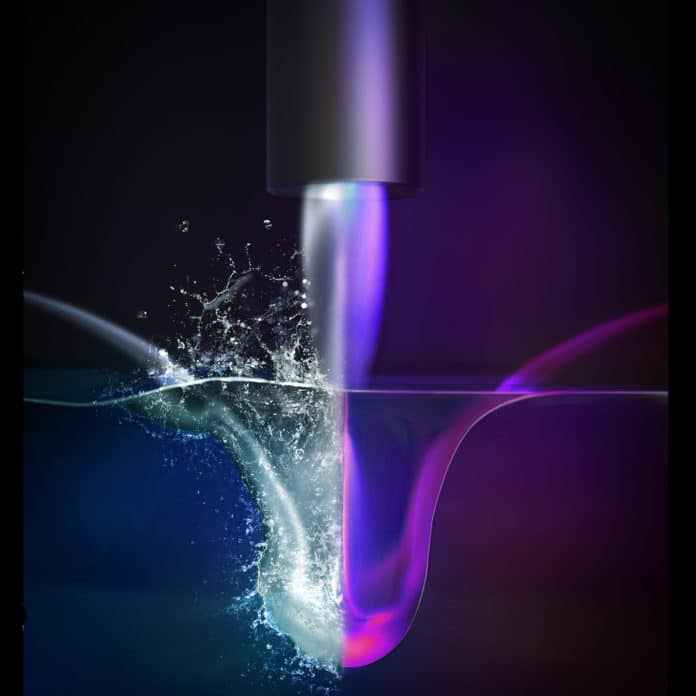Thanks to a new study by the KAIST scientists that could improve the scientific understanding of plasma-liquid interactions and their practical applications. According to the study, plasma jets generates a more stable interaction with the water’s surface than a neutral gas jet.
When interacting with the water surface, a neutral gas jet produces dimple-like depressions in liquid surfaces. The perfect example of this phenomenon: blowing air through a straw directly above a cup of juice generates a cavity. With the increasing speed of the gas jet, the cavity becomes unstable and starts bubbling and splashing.
Scientists investigated what happens when a plasma jet is blown over water. For this, they created a plasma jet by applying high voltage to a nozzle as gas flows through it, which causes the gas to be weakly ionized and acquire freely-moving charged particles.
Using an optical technique with high-speed imaging, scientists observed the water surface cavities profiles created by both neutral helium gas jets and weakly ionized helium gas jets.
A computer model was also developed to explain the mechanisms behind their experimental discovery.
For the first time, scientists demonstrated that an ionized gas jet stabilizes the water’s surface. It happens because the plasma jet emits specific forces that make the water surface cavity more stable.
It was also found that the plasma jets consists of plasma bullets that exert more force than a neutral gas jet, making the cavity deeper without becoming destabilized. These plasma bullets are pulsed waves of gas ionization propagating along the water’s surface.
Professor Choe said, “This is the first time this phenomenon has been reported. Our group considers this a critical step in understanding how plasma jets interact with liquid surfaces. We next plan to expand this finding through more case studies that involve diverse plasma and liquid characteristics.”
Journal Reference:
- Sangho Park et al. Stabilization of liquid instabilities with ionized gas jets, Nature (2021). DOI: 10.1038/s41586-021-03359-9
